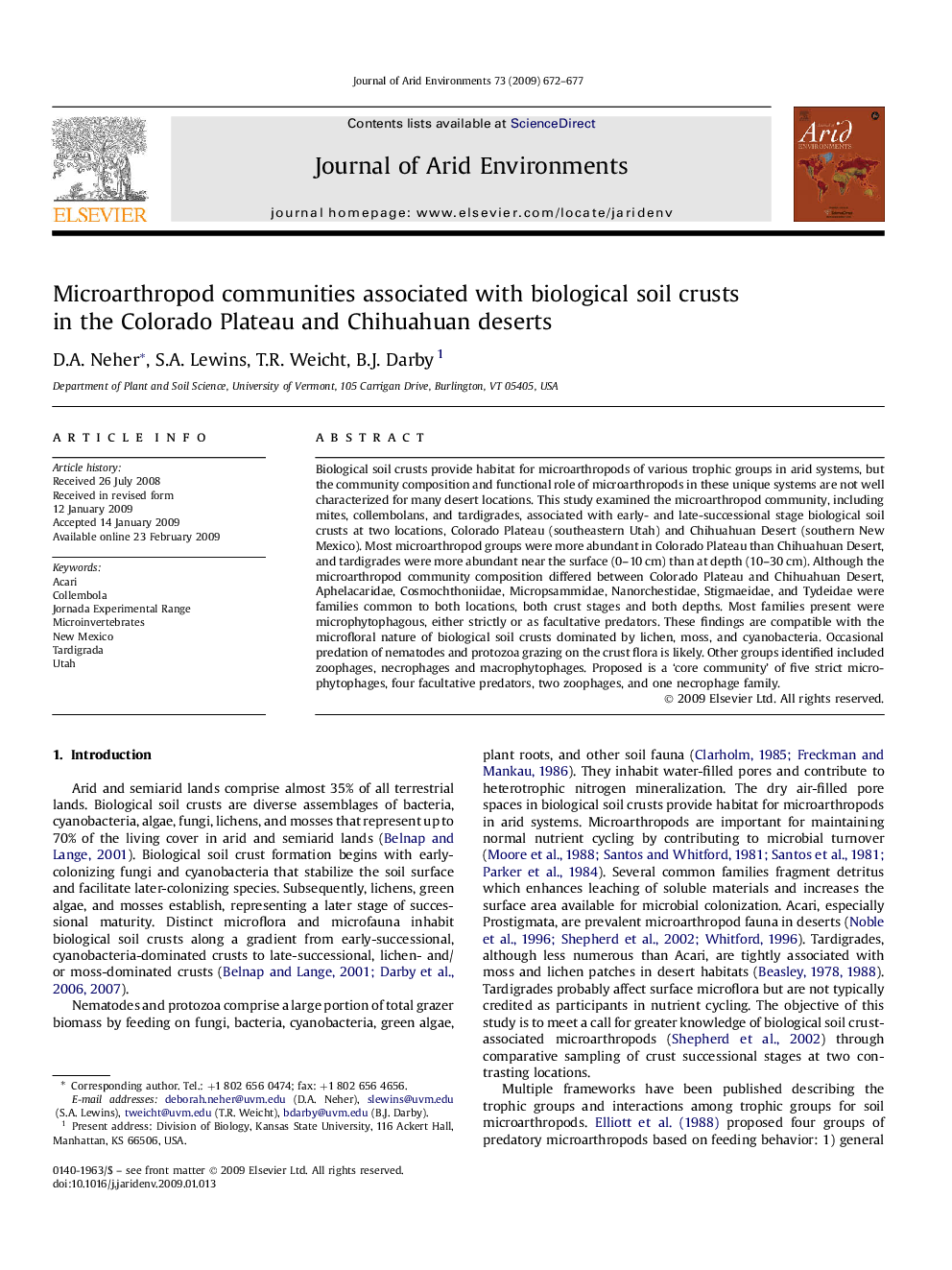| Article ID | Journal | Published Year | Pages | File Type |
|---|---|---|---|---|
| 4393783 | Journal of Arid Environments | 2009 | 6 Pages |
Biological soil crusts provide habitat for microarthropods of various trophic groups in arid systems, but the community composition and functional role of microarthropods in these unique systems are not well characterized for many desert locations. This study examined the microarthropod community, including mites, collembolans, and tardigrades, associated with early- and late-successional stage biological soil crusts at two locations, Colorado Plateau (southeastern Utah) and Chihuahuan Desert (southern New Mexico). Most microarthropod groups were more abundant in Colorado Plateau than Chihuahuan Desert, and tardigrades were more abundant near the surface (0–10 cm) than at depth (10–30 cm). Although the microarthropod community composition differed between Colorado Plateau and Chihuahuan Desert, Aphelacaridae, Cosmochthoniidae, Micropsammidae, Nanorchestidae, Stigmaeidae, and Tydeidae were families common to both locations, both crust stages and both depths. Most families present were microphytophagous, either strictly or as facultative predators. These findings are compatible with the microfloral nature of biological soil crusts dominated by lichen, moss, and cyanobacteria. Occasional predation of nematodes and protozoa grazing on the crust flora is likely. Other groups identified included zoophages, necrophages and macrophytophages. Proposed is a ‘core community’ of five strict microphytophages, four facultative predators, two zoophages, and one necrophage family.
